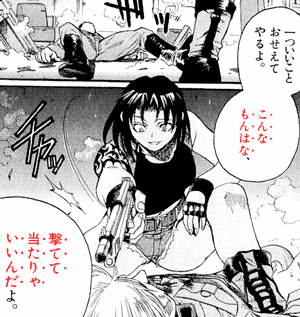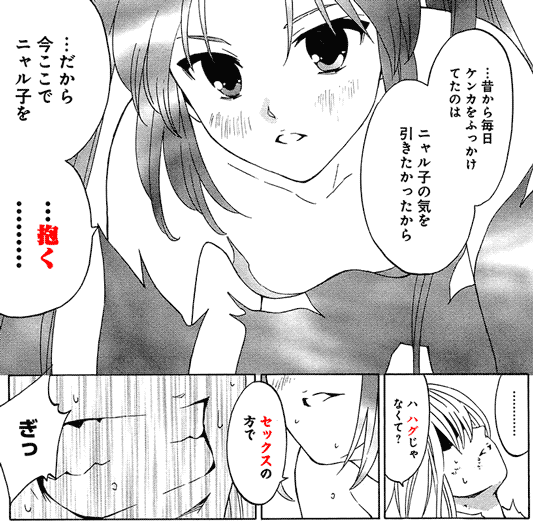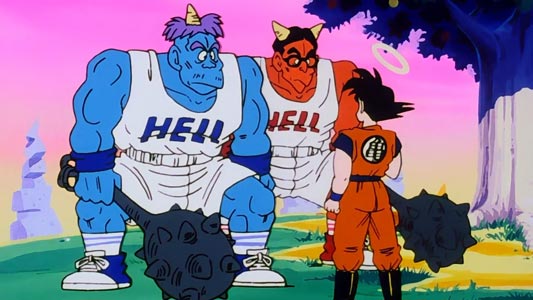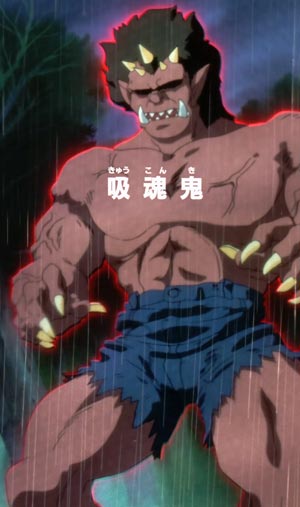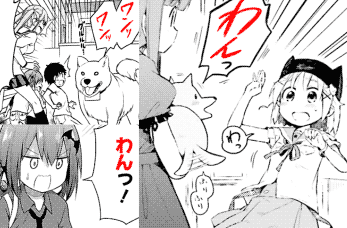O__san お〇〇さん
お~, ご~, 御~ Honorific Prefix
Emphasis Dots
In Japanese, bouten 傍点, "side marks," are dots written in the furigana 振り仮名 space that express emphasis. They work like italicized text, or bold text. To emphasize a phrase, every pronounceable character of the phrase gets a dot beside it—punctuation doesn't get dots.
・ Middle Dot
Well, it has multiple functions.
Separating Katakana Words in Names, Titles & Phrases
But there's a problem: Japanese rarely uses spaces, and it relies on having multiple alphabets to tell the words apart in a sentence. Then, how'd you separate two katakana words in Japanese, given they're all written with just one alphabet: the katakana?
There are multiple ways.
zoku 続 - Meaning in Japanese
In Japanese, zoku 続 means "sequel," or more literally, "continuation." It's found in the names of some anime which refer to the second season of a series or some other sort of continuation.
It's spelled with the same kanji as tsuduku 続く, which means "to continue" and is sometimes found at the end of an episode (typically spelled with hiragana, as tsuduku つづく) because the series continues in the next episode.
gattai 合体
In Japanese, the word gattai 合体, written with the kanji for the words "join" and "body," means, literally, to combine two or more bodies into one. Although the term can be used in a number of ways, in anime it's pretty much always used to refer to one thing: combining mechas!!!
daku, idaku 抱く
The word daku だく means "to embrace [someone]," "to hug [someone]," "to have sex [with someone]," and "(for a bird) to sit [on eggs]."
The word idaku いだく means "to embrace," "to hug," and, unlike daku だく, it can be used toward thoughts: to embrace an idea, to embrace a feeling.
How to Embed Pixiv Images
Update: since around 23rd of July, 2022, the code in this article no longer works. It's uncertain if Pixiv permanently dropped support for embedding or this is some temporary error.
Since I've been embedding a dozen of Pixiv images in this blog for reference, I'm going to go off-topic for a bit to show how to embed these things.Now, you might be asking: why would anyone want to embed them instead of just
The pros are:
- If the artist deletes the post from Pixiv, it'll automatically disappear from your website, respectfully.
- Spend less bandwidth because the images are hosted on Pixiv.
The cons are:
- If the artist deletes the post from Pixiv, it will disappear from your posts.
(note: this actually happened to be, so for example images I steer away from using images posted recently and take the ones posted from years ago instead.) - If the post is deleted by Pixiv mods, the embedded images disappear too.
- If the artist is banned from Pixiv, the embedded images disappear too.
- If the artist updates their post the image may change into something you don't want.
- If the artist's account is hacked the hacker may changed all his post images into something you really don't want.
- Takes longer to load the page because the browser has to access multiple websites.
- Needs to load a script to load a image instead of just loading the image.
- Embedded synchronously causes the page to render only partially until the script loads.
- In the unlikely event Pixiv is hacked and somebody replaces the script with a malicious script, the malware will be spread all over your posts.
- In the unlikely event Pixiv is hacked and somebody deletes the database and they don't have a backup (which I'd like to say is unlikely, but can't because some people just don't do backups.) then your embedded images disappear.
- In the event Pixiv stops supporting embedded images with the script, the embedded images disappear.
- If Pixiv goes down, your embedded images disappear.
- If Pixiv goes under, your embedded images disappear.
- You can only choose three different sizes for the images (small, medium, large), although you can resize them arbitrarily with CSS voodoo.
- In certain content editors (forums, some free blogs) adding user scripts is forbidden so the embedding is impossible anyway.
Blue Oni Red Oni
In anime, when oni 鬼 characters are involved, it's common for there to be a blue oni and a red oni, the blue oni having a single horn and the red oni two horns.
Middle: Mez, メズ
Right: Son Gokū 孫悟空
Anime: Dragon Ball Z, ドラゴンボールZ (Episode 13)
The origin of this blue oni red oni trope comes from a certain children's tale about friendship. It was a popular one, so references to it spread across all media and fiction, not just anime.
Note that, most of the time, there's usually no deeper meaning to the red oni blue oni combo. It's simply that if there's a red oni, the blue oni will show up sometime, or vice-versa.
oni 鬼 - Meaning in Japanese
In Japanese, oni 鬼 is a kind of "supernatural being," youkai 妖怪 in Japan's culture, often translated to English as "ogre" or "troll," although those would be technically different things. Generally speaking, an oni in anime is a big, strong, scary, evil, rugged, powerful humanoid monster, who has one or two horns on its head, fangs, and the like, but designs may vary. Thematically, humans are said to be afraid of oni because oni are said to devour humans, they're generally brutes or savages, and there's a well-known story about a blue and a red oni who try to become friends with humans through some sacrifice to make them be not afraid.
Not to be confused with oniisan お兄さん, which means "older brother."
Anime: Yū☆Yū☆Hakusho 幽☆遊☆白書 (Episode 6, Stitch)
- Context: Gouki reveals his true form. He's a...:
- kyuukonki
吸魂鬼
Spirit-sucking demon.- {tamashii wo suu} oni
魂を吸う鬼
A demon [who] {sucks souls}.
- {tamashii wo suu} oni
Nowadays, oni are normally portrayed featuring colored skin, specially red and blue, just like the modern day ogre is usually green. In anime, oni characters can usually talk and have some sort of connection with the demon world, afterlife, hell, makai 魔界, or something supernatural like that.
Apparently, the word oni would mean it's an invisible spirit, originally, but that's rarely the case in modern fiction.
Sounds Animals Make in Japanese
See the "cry" section for the word for "crying" in Japanese.
The following words do not have kanji, they're only written with hiragana or with katakana. The katakana version is in the parentheses, by the way.
nya にゃ (ニャ)
nyaa にゃー (ニャー)
nyan にゃん (ニャン)
Sound made by "cats," neko 猫.
"Meow."
wan わん (ワン)
wanwan わんわん (ワンワン)
Sound made by "dogs," inu 犬.
"Woof."
kon こん (コン)
konkon こんこん (コンコン)
Sound made by "foxes," kitsune 狐.
(as demonstrated in Flying Witch, this is totally wrong, foxes don't make these sounds.)
wan わん - Meaning in Japanese
In Japanese, wan わん is the sound dogs make when they bark, an onomatopoeia. In other words: wan is "woof" in Japanese, or wanwan わんわん means "bow-wow" in Japanese, or something like that.
Note that wan わん doesn't have kanji and may be written with hiragana because hiragana is cuter, or written with katakana as wan ワン.
When wan' わんっ or wan' ワンッ are written instead, with a small tsu っ at the end of the phrase, it emphasizes the sound, expressing a stronger-sounding bark.
Manga: Gabriel DropOut, ガヴリールドロップアウト (Chapter 7)
Manga: Gakkou-gurashi! がっこうぐらし! (Chapter 17)
wanko わんこ - Meaning in Japanese
In Japanese, a wanko わんこ is a colloquial way to refer to a dog, specially a puppy. The word is formed from an onomatopoeia for the sound dogs make, "woof," in Japanese: wan わん, and ko 子, which in this case is a suffix used to refer to something cute.
So wanko is how you say "doggy" in Japanese. But more literally wanko means "lil' woof" or something like that. Note, however, that despite the cutesy origins of the word, it may be used in a very enraged way depending on the situation.
nyanko にゃんこ
In Japanese, a nyanko にゃんこ is a colloquial way to refer to a cat, specially a kitten. The word is formed from an onomatopoeia for the sound cats make, "meow," in Japanese: nyan にゃん, and ko 子, which in this case is a suffix used to refer to something cute.
So nyanko is how you say "kitty" in Japanese. But more literally nyanko means "lil' meow" or something like that. Note, however, that despite the cutesy origins of the word, it may be used in a very enraged way depending on the situation.
- Context: an old man wakes up in the body of a girl because of a cat.
- kono... kuso nyanko...!!
この・・・クソニャンコ・・・!!
[You]... damn kitty...!!
(swearing with kono この.) - kono karada wa nan'ya
この体はなんや
What's [up with] this body.- nan'ya - same as nanda なんだ, kansai dialect.
- omae wa nanimono ya...
お前は何者や・・・
Who are you...?- ya - same as the da だ copula, dialectal.
- haa haa
ハァハァ
*panting*
(onomatopoeia.) - washi ni nan'no urami ga an-nen......!!
ワシになんの恨みがあんねん・・・・・・!!
What do [you] have against me......!!?- an-nen - contraction of aru nen あるねん, dialectal.
- ~ni urami ga aru - to have a resentment, grudge against [someone].
